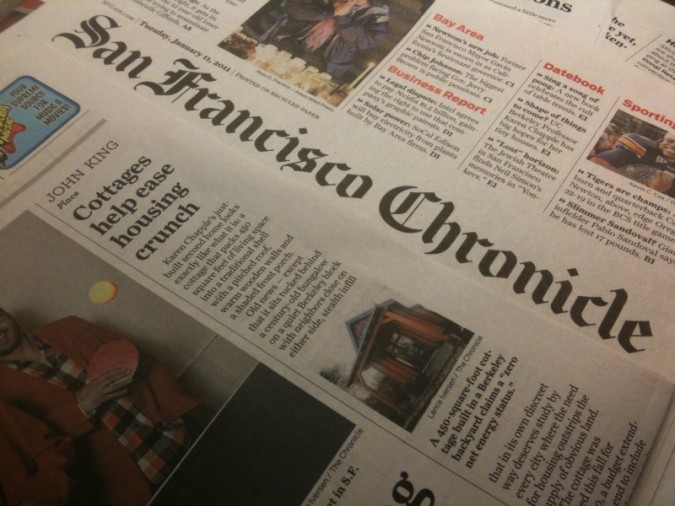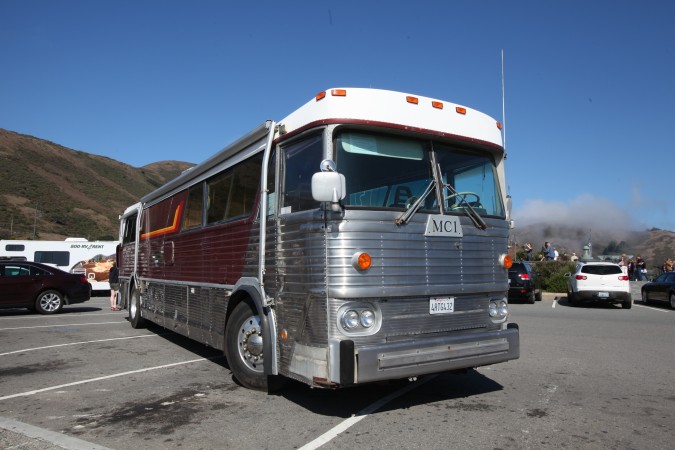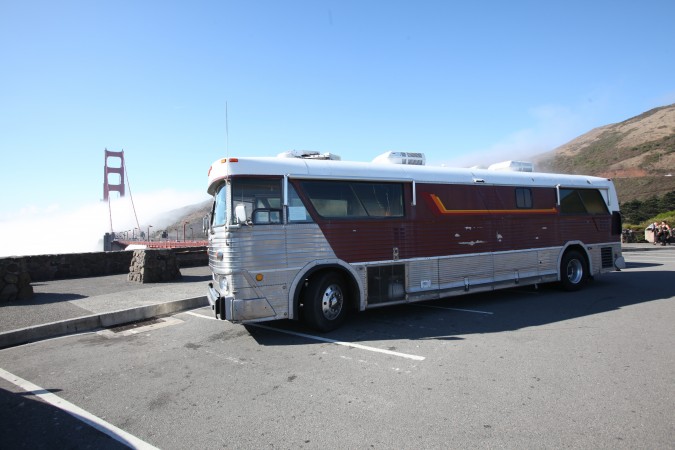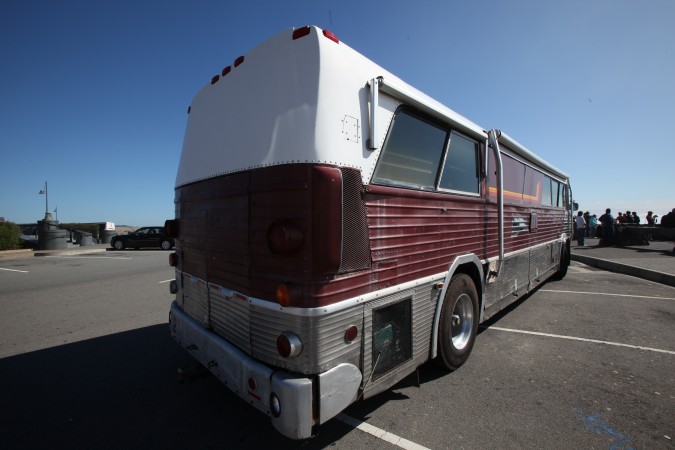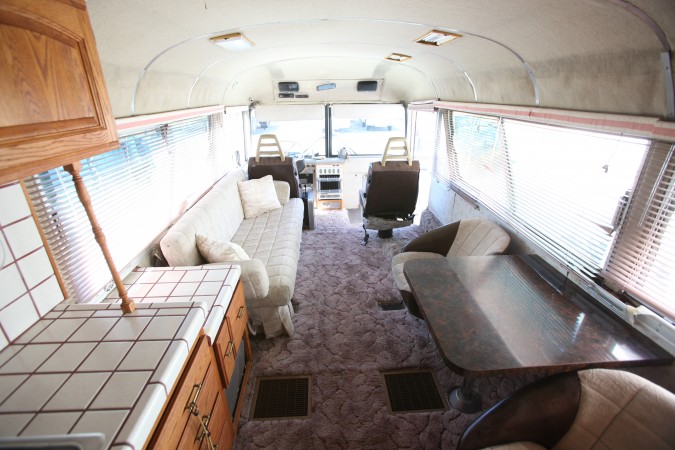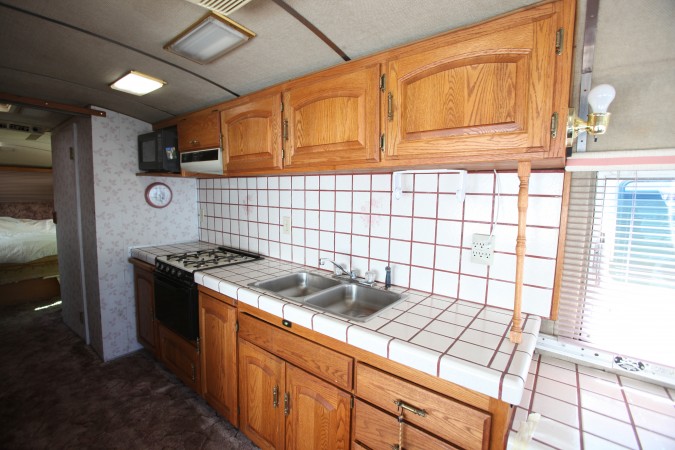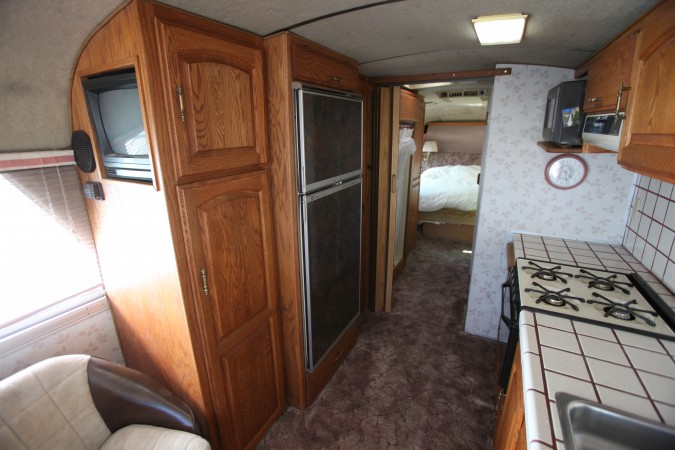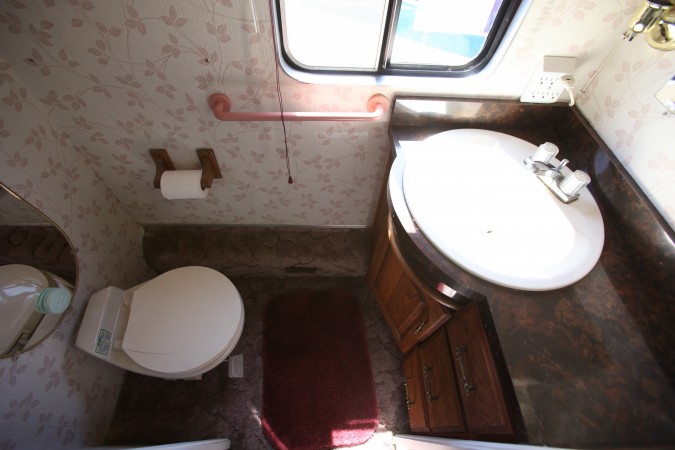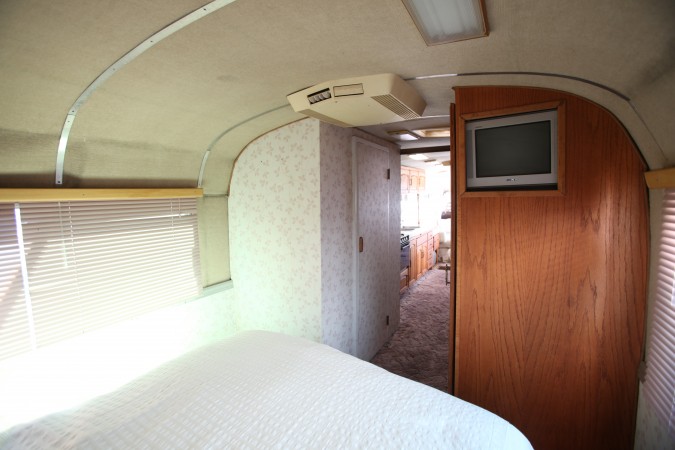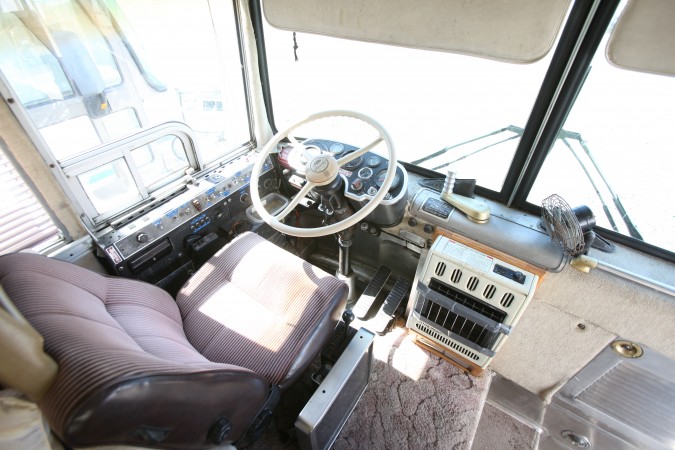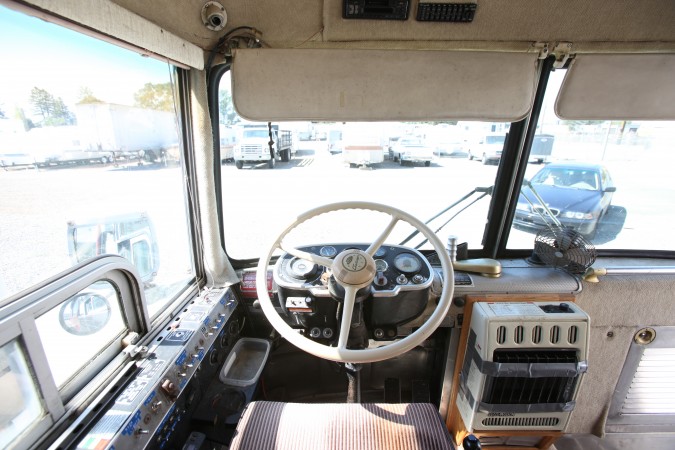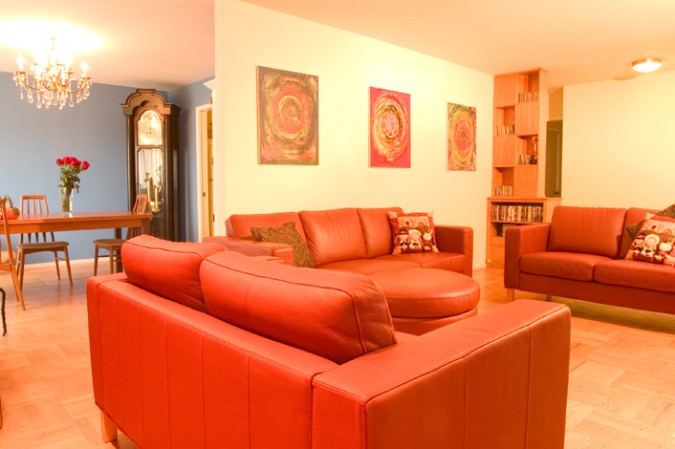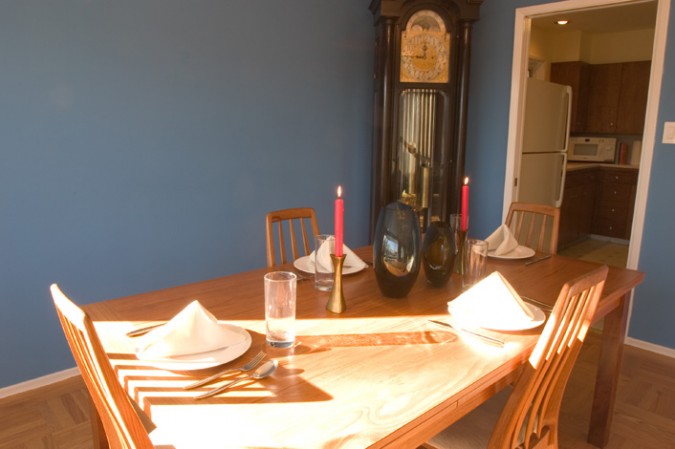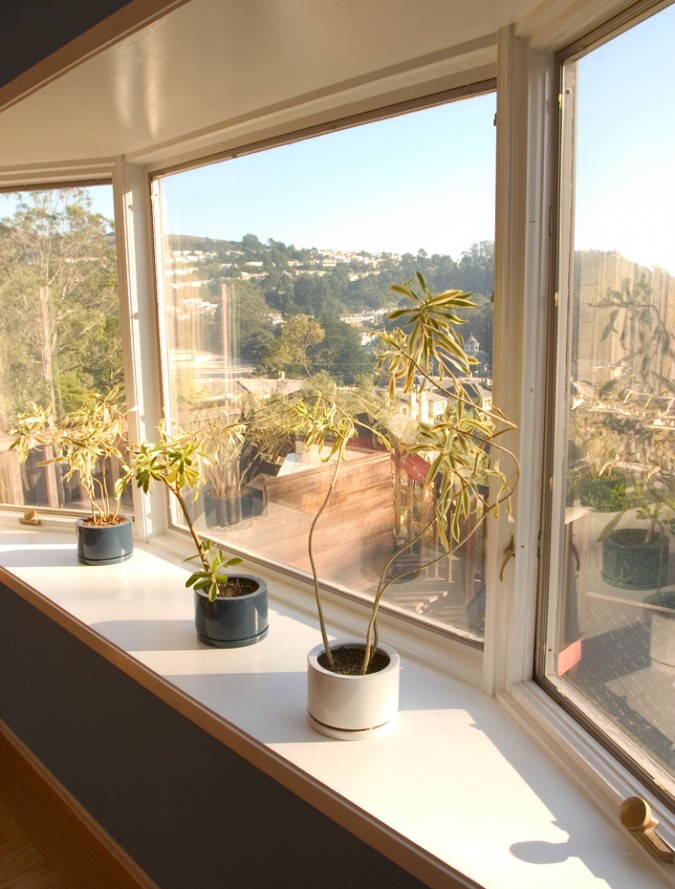Archive for January, 2011
New Avenue, Inc. featured in today’s San Francisco Chronicle newspaper
My friend Kevin Casey’s New Avenue, Inc. house that I’ve been writing about here was written about in today’s San Francisco Chronicle newspaper. This is the primary newspaper for San Francisco.
The story appears in the print edition and on the front page of the online edition in a story entitled Berkeley zero net energy cottage deserves study. Since the front page changes all the time, I made a screen capture SFGate_front_page_january_11_2011 so you may see the prominent coverage New Avenue received. I also made a screen capture of the article itself since the Chronicle may take down the article after some time, but I expect this blog will remain accessible indefinitely. Here’s the link to a PDF copy of the full article: SFGate Jan 11 2011 New Avenue article. Note that these PDFs have clickable links, so if you see something you like, you can click it and the link will take you to the same place the SFGate.com version will take you to.
Congratulations to Kevin and New Avenue!
Well done graphic describing dangers of drugs and alcohol

As you may have figured out by now, I live a healthy life and don’t take drugs or drink alcohol. I have seen too many people ruin their lives with drugs and alcohol, and it’s so sad to see people who were once full of promise do poorly because they were escaping reality through substance abuse.
An aquaintance of mine from my youth went on such an extreme bender about five years back that I heard he lost his wife and kids and now lives in San Francisco’s public Laguna Honda hospital and rehabilitation center, and will be there or somewhere similar for the rest of his life. He can’t remember his wife or kids or any of his friends, I’m told. I didn’t know him that well, but I’ve known him for 20 years or so. He was a charismatic artist and performer in his youth, with real magnetism. Now he apparently flirts with the nurses, but can’t recognize his own children. How sad. His name is Tony Chatham, and he was the lead singer for a band my friend was in. I photographed Tony’s band, and years later he told me a framed photograph from that shoot hung in his and his wife’s bedroom. He loved that band and that picture, and he always reminded me of that whenever he saw me. This, of course, was before his tragic overdose.
Here’s an attractively produced graphic that lists some of the horrors that can result from substance abuse. I found this today while looking at the website Digg where popular web pages are voted up by readers. If you’re in a position to influence people, you might want to display this poster sized graphic… it may help save someone the agony of what I’m sure Tony and his family went through and continue to go through.
New Avenue, Inc. Ribbon Cutting Ceremony For First Completed Project in Berkeley, California USA
Yesterday I attended the ribbon cutting ceremony for the first completed home built by New Avenue, Inc., which was founded by my friend Kevin Casey.
I estimate 200 people came by to see the 420 square foot backyard detached house. Kevin persuaded the mayors of Berkeley and El Cerrito to speak at the ribbon cutting. I introduced myself to both mayors after the conclusion of the formal event, and they were both very personable and warm.
I shot a lot of pictures and video, but I’ve not had time to edit it. So today I will just post the video of the formal spoken remarks. Later this week I will post the walkthrough video I shot, which is fascinating because you see all the attendees clamoring to examine every corner of this really charming house.
I spoke with many of the people in attendance, including a woman who lived recently in Hawaii in a house this size. She’s a graduate student at UC Berkeley now, and her enthusiasm for what New Avenue is trying to do was contagious.
Tim Ferriss interview at Commonwealth Club of California January 6, 2011
I joined the Commonwealth Club of California on January 6, 2011. Hours after I joined, I was at their Market Street, San Francisco headquarters watching Tim Ferriss be interviewed by a reporter for Bloomberg BusinessWeek magazine. Ferriss is the author of the best selling book The 4-Hour Workweek, which I read last year on the advice of my friend Gleb Budman. I have dismissed books of this genre in the past, but I don’t dismiss this book. There is a lot of wisdom in this book, and I came away from watching the interview thinking even more favorably of Ferriss. Yes, he is an outstanding self-promoter who’s even been voted the most effective self-promoter in the world. Yes, he has done some questionable things I don’t approve of. But he makes a strong case that there is a valid path to success that does not require working round the clock. As far as I can tell, Ferriss works far more than 4 hours per week, and I take the title of his book as being more provocative than literal.
The Commonwealth Club is a public affairs forum, and all speakers volunteer their time to talk at the forum. Thus Ferriss was not paid, although he probably commands a hefty speaking fee in other contexts. Perhaps as a result of the Commonwealth Club’s public mission, there were no requests to shut off cameras or recording devices. In fact, the moderator gave explicit instructions on how to Tweet most effectively about the event so the messages would be discoverable by the Club. As a result of the above, I shot video of the interview with my handheld camera, and part 1 of 3 appears above in this post. The quality is marginal because I can’t hold a camera steady, but the audio is good, and you can still see the action up close despite my less than good camera work. I am not intending to take away from income due Ferriss by posting this here, and if asked by the Club or Ferris or his representatives, I will remove this video immediately. I think that on balance, I help Ferriss by spreading the word to my readership about his work, and it’s in the spirit of helping Ferriss that I post this video here today. I will post parts 2 and 3 over the next week.
Tim Ferriss talks about his latest book, The 4-Hour Body, in this interview. I have not read that book, but I plan to. I flipped through it in the lobby, and it looks worth reading. It’s a large book, probably twice the size of The 4-Hour Workweek. Ferriss is both an entrepreneur and a health advocate, and his passion for both rings true. I got to meet Ferriss at the reception that followed the interview, and he sure makes a great effort to be personable and helpful. He had a swarm of people around him for well over an hour, and I got to meet him toward the end of that time. He was still cheerful and helpful even after what must have been an exhausting several hours for him.
My impression of the Commonwealth Club is great so far, and I look forward to seeing Michael Milken speak later this month.
Kevin Casey’s New Avenue Homes Ribbon Cutting Ceremony January 8, 2011
One of the advantages to my sponsoring the Business Plan Competition at University of California at Berkeley is that I get to meet interesting, bright, motivated students. How does this work exactly? I’m a judge for the competition, and that puts me into regular contact with the student organizers. In about 2007, Kevin Casey was one of the organizers, and we got to know each other just a little bit. But I remembered him, and when he got into the tiny house movement, I took notice and contacted him.
He’s taking a different approach than I plan with my Green Homes venture I haven’t started but probably will at some point. But his approach is valid and he’s making solid progress.
Kevin Casey’s company is New Avenue, Inc. Here’s their mission statement, which I copied directly from their website for precision:
“In the United States 40 million of the 70 million single family homes have just one or two people living in them. These under-used homes were designed for easy building, not quality living, and they drive a seemingly endless list of negative effects such as sprawl, traffic congestion, lifelong “homeowner” debt, and costly energy use. This incredible waste of space is the result of the traditional model of accommodating growth through suburban tract home development. The US Census projects a need for 12.5 million additional homes by 2020 and we need a new way of creating these homes.
New Avenue is an alternative development model that enables communities to grow internally as opposed to externally. We do this by building homes on underutilized properties within existing neighborhoods. Our homes are designed to accommodate the true diversity of our family types, namely those of us that live in one or two person households. We call this the small plot development model and it can end suburban sprawl as we know it, accommodate the demand for 12.5 million new homes we need and bring financial and environmental sustainability to families.
New Avenue delivers a turnkey solution for building these one and two person homes. We have unique expertise in design, land use rights, financing, permitting and pre-fab manufacturing that allows us to create building opportunities where it is either illegal or unprofitable for the old fashioned banks, builders and developers to operate.
By creating new legal and financial products we eliminate the barriers that foil the old way of building and enable the creation of tens of thousands of right-sized homes that are energy efficient, attractive and healthy to live in. The homes we build provide financial security to landowners and strengthen our communities without consuming any additional green space.
The installation of small second homes can create community, enhance health, produce renewable energy, and provide a financially sustainable alternative for property owners and investors to shape the future of our communities.”
Kevin’s New Avenue has built its first home, close by in Berkeley, California. It’s in the back yard of a detached house that belongs to a UC Berkeley professor. I’ve toured Kevin’s tiny house twice, once while about half done and once after it was completed. It’s a charming, warm and livable home. It’s a mere 420 square feet, but I think a single person could comfortably live in it for years. The only thing it really needs that it doesn’t have is a washer and dryer.
Kevin arranged for no less than the mayor of Berkeley to be on hand for the ribbon cutting ceremony, which is scheduled for tomorrow, Saturday, January 8, 2011 at 2:30pm. The preliminary festivities start earlier at 1pm. I plan to attend, and if you’re in the area, I encourage you to attend as well. Kevin has BIG plans for New Avenue, and I wish him the best of success in his ambitious entrepreneurial adventure.
My friend Sara Olsen likes what Kevin’s doing as well. Here’s an article she wrote for GreenBiz.com entitled The Social ROI Green, Affordable Housing. She writes that Kevin plans to build a stunning 10,000 tiny houses in the next few years. Kevin shared that detail with me as well, but I didn’t know if it was a number intended to be publicized. Since Sara published it, I’ll emphasize her point here. Kevin certainly thinks big. Maybe I’ll one day be talking about shipping 10,000 shipping container Green Homes… I hope so.
Please fill in your email address in the upper right corner of this page if you’d like to subscribe to this blog. I’m trying to build my subscriber base, which is why I’m cluttering up some of these posts with this request. If you like my writing, please also leave me a comment and tell your friends about this blog. Thank you!
1967 MCI 5A Challenger Bus Conversion For Sale
The time has finally come for me to find a new home for my beloved first bus conversion, a proud Motor Coach Industries model 5A Challenger from 1967, The Summer of Love.
I love this bus, and I’ll no doubt shed some tears when the happy new owner drives off into the sunset to start building their golden dreams on the open road.
The story behind this bus is worth sharing. This story was related to me by John Ridley, the former owner. He said in about 1992 six Arizona fireman retired at the same time and all bought passenger buses for themselves. Together, they all converted these six buses to motorhomes, or ‘bus conversions’. Then, after a period of time, the fireman all sold the buses at the same time and all bought boats. The story ended there, but something tells me they later sold the boats and all bought some new toy at once.
John Ridley bought one of these fireman converted buses. John served for the US in the Vietnam War, where he was injured. He could walk for many years after the war, despite his injuries. Later in life, after a career as a truck driver, he was confined to a wheelchair. This didn’t stop him from maintaining and driving his bus conversion. He had hand controls installed for the accelerator and brakes, and a cruise control so he could relax on the highway and not have to apply constant pressure with his hands on the hand controls.
His wheelchair was manual and snapped apart into four pieces easily. He could back the chair up to the passenger door, use his arms to shift his position from the chair to the bottom step, where he could sit while he snapped apart his chair and hoisted its component pieces over his head to place them inside the conversion. Then he would use his arms to ‘climb’ the stairs, back first. He could then scoot across the floor to the driver’s seat and pull himself into position by grabbing the steering wheel. He wasn’t going to let his disability interfere with his love of buses.
Once he got to his destination, his wife, a school bus driver by profession, would unload their Harley Davidson motorcylcle with sidecar from the trailer they towed behind the MCI. Then they would go motorcycling together with his wife driving the Harley and John riding in the sidecar. This all worked out for years. Sadly, John’s disability progressed to the point he couldn’t do routine maintenance on the conversion any more so he felt he needed to find a new owner for it. I was thrilled to buy this vehicle from John, and he spent two days showing me how to drive it well. He also hand printed an instruction book telling me how to operate the systems. He also had the original MCI owner’s manuals, and I will include all of this material with the bus when I sell it.
The above picture shows the kitchen area. The range is fueled by propane, and it features four burners plus an oven. There are pull out cutting boards to the left and right of the range. The sink has two bowls, and there is a sprayer for cleaning up with. There is an exhaust hood over the stove which vents to the outside, and the hood has a light in it. There is a microwave oven to the left of the range hood. The cabinets doors are solid oak and were custom made for this conversion.
The photo immediately above shows the television set for the living room, inside the cabinet. The cabinet wall also has the room thermostat for the forced air furnace. There is also one of four stereo speakers, visible just above the thermostat. The refrigerator runs on 110 volts AC or propane. It has a separate freezer section, like a home refrigerator.
This is a full size mattress in the bedroom. The reading lights have three way bulbs in them, for reading or mood lighting. The nightstand cabinets are custom made and the door fronts are made from solid oak and match the rest of the cabinets throughout the rolling home.
The photo above shows the toilet and vanity. The vanity is custom made and matches the rest of the cabinets. The Formica matches the front of the refrigerator. The sink is real ceramic, not plastic like you would find in some RVs.
The photograph above shows the bathroom in the center. The shower stall is across the hall from the bathroom, behind the TV, which is in the closet. Again, this cabinetry is all hand made. One of the two air conditioners can be seen on the ceiling over the hallway. The kitchen can be seen in the distance.
The photo above shows the driver’s seat. There is a propane heater to the right of the seat, which can be used alone or with the forced air furnace. The handle to open the passenger door can be seen to the right of the steering wheel. This handle still works. There is a fan for the driver to the right of the door handle. The conversion has an automatic transmission, and the shift knob is to the driver’s right, next to the seat cushion.
This is the view from the driver’s seat. You can see my blue BMW 525i right above the driver’s fan. The view above the traffic from this seat is outstanding, and one feels very secure driving this vehicle, as it’s rock solid and dependable.
The engine is a Detroit Diesel 8V-71. It’s in good shape, and I welcome potential buyers to take the bus conversion to their own mechanic for inspection prior to purchase. I’ll even let your mechanic keep the vehicle overnight so he can attest to how easily it starts when cold.
In 2002 I drove this conversion from San Francisco, California to New York City, New York, over a 2 1/2 month period. The only trouble I had was two flat tires, but that was to be expected since the tires that blew were old. I had no mechanical trouble with the rest of the vehicle, which was comforting.
There is a gas Onan 6,500 watt generator with about 600 hours on it. That means it has a lot of life left in it. It starts right up even if it’s not used for over a year. This is a non-electronic model, so it’s much more reliable over the long term than a modern electronically controlled model. The bus engine is also mechanical, so it’s likely to run forever, if maintained. There is nearly a full tank of diesel in the 100+ gallon tank, and I always stored it with a full tank, which is recommended for long term storage of any diesel vehicle.
There is no inverter, but it’s wired for a large inverter, and there is a 500 pound capacity battery slide installed as well. I moved the inverter to my RTS conversion, so that’s why there isn’t one included with this vehicle. However, the previous owner used the conversion the entire time he owned it without an inverter, so one is not needed since there is a very capable generator on board, with inside the vehicle remote start.
This vehicle is a pleasure to drive. There is very little play in the steering, since it has ‘new’ steering. You won’t grow tired correcting the steering like many other old buses. The air conditioning is powerful, and will keep the inside cool even in Las Vegas when it’s 107F out. I know because I stayed there a few days under such conditions.
Please contact me if you’d like to schedule a test drive. You don’t need a special license or training to drive this, believe it or not. If you don’t know how to drive a bus conversion, I’ll show you. That’s how I learned, while in the buying process, so it can be done.
If you want to learn more about bus conversions, visit the two primary bus conversion websites in the United States, BusNut.com and BusConversions.com. I am asking $5,000 for this bus conversion, which is a steal, as I paid $33,000 for it in 2002. The market for bus conversions was much stronger then, and the prices were much higher. Today they are really depressed, thus my low price. You’ll have a great time with this bus conversion.
Bus Conversions Magazine
I just wanted to give a plug to Bus Conversions Magazine. This is the magazine that got me hooked on this ridiculous yet fantastic hobby of converting a bus into a motorhome. I read their website daily, and I’ve learned a dramatic amount from the discussion forum the publisher hosts as a public service to subscribers and non-subscribers alike.
I’m sure they would like some more subscribers, as some of their readers had to group together to buy the magazine from the founder a while back to keep it afloat. The quality has gone way up under the new ownership. There used to be glaring typos throughout, but they have been mostly eliminated. I hope to become a columnist for this magazine one day, writing about my super green RTS conversion, now underway. I hope they will let me adapt my blog postings for print to get started!
I discovered the box in the upper right to subscribe to this blog has been broken for some time, so I don’t have as many subscribers as I otherwise would have. If you liked this post, and would like to subscribe, please type in your email address in the little box in the upper right. I won’t write useless nonsense to you, I promise. Thank you.
BBC Video ‘Good Neighbors’ Comedy Series About Urban Homesteading
My brother Andrew and his wife Krista gave me a simply wonderful Christmas gift 8 days ago. I can’t recall ever getting a more moving Christmas gift from anyone. Andrew bought me a paint set about 13 years ago, and that was a great gift in that it got me back into painting, which I hadn’t done since I was a child. And while I love to paint, and have decorated my house with my work, the paint set wasn’t as deeply important as what Andrew and Krista gave me this year. The special gift?
They got me the 1970s BBC Television series on DVD originally titled The Good Life. The series has been renamed Good Neighbors on the DVD packaging, but the video images themselves use the original title. The 4 disc set covers the complete 3 season run of the show.
Here’s the series summary from the back cover of the DVD boxed set:
“Good Neighbors is considered on of the best British sitcoms ever by critics and audiences alike and took North America by storm when it premiered here on PBS.
Tired of the rat race and looking for more from life, Tom Good decides to quit his job and become self-sufficient… all without leaving his cozy suburban home. His wife, Barbara, agrees to his outlandish plan, and without a second thought they’ve dug up their well-laid lawn and turned it into a vegetable plot. A goat, pigs, and chickens soon follow.
Their best friends and neighbors, Margo and Jerry Leadbetter, think they’ve gone mad, especially Margo, the ultimate middle-clas suburban snob. Can the Goods really live off the land in the London suburbs? Can the Leadbetters stand it if they do?”
I find this show so meaningful because I want to do what the Goods do in this show! I am advertising for housemates right now that want to raise chickens, goats and vegetables right in San Francisco. I hope to raise all the food we need to eat one day, although that’s a tall order and one that almost certainly can’t be met. But we may be able to get close, except for items like spices, rice, tea, tropical fruit and industrial products like soda and chocolate chips.
I don’t want to forgo outside income like the Goods do, however. The Goods barter and sell some of their crops to make the cash they need to pay their property taxes. They need no money for utilities since they turned them all off. They have a methane digester to convert the goat manure to methane gas, which they burn in a basement electrical generator to power their lights. They bartered their toaster and hair dryer for a rusty old wood fired kitchen range. They get their firewood by scouring the neighborhood for diseased fallen trees, which they roll back home in pieces on an old baby carriage turned wagon.
I don’t want to give away the whole series in this post, so I’ll leave now with just these titalating highlights. I’ll write episode reviews from time to time, to cover what happens in more detail. I’ve only watched less than half the series, but it’s clear that the self-sufficient money poor couple is much ‘richer’ than the nominally rich couple next door. Money doesn’t buy happiness rings through the series in numerous profound scenarios. I’ve tried to buy happiness before and I know it can’t be done, so this show resonates with me more than most. It’s just so charming, captivating, delightful and sweet that you should login to Netflix right now and start watching it on demand.
I discovered the box in the upper right to subscribe to this blog has been broken for some time, so I don’t have as many subscribers as I otherwise would have. If you liked this post, and would like to subscribe, please type in your email address in the little box in the upper right. I won’t write useless nonsense to you, I promise. Thank you.
Kevin Warnock’s Plan To Efficiently Air Condition a Bus Conversion
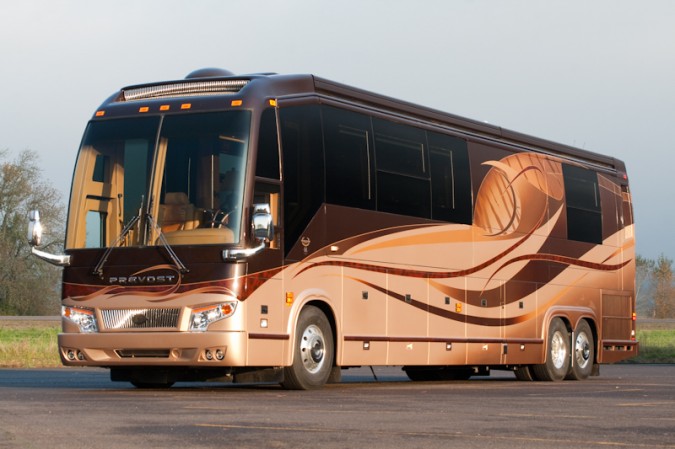
Marathon Coach bus conversion. This is not Kevin's conversion, but a finished professional conversion that costs over USD $1,000,000.00. This is to give you a rough idea what the plan is, though Kevin's will be much less fancy but more more green. It will also cost much, much less to own, complete and operate.
I’ve touched on my bus conversion project before. Today I will start writing about it in more detail.
The bus is a 1994 TMC 80206 “RTS”. The engine is a Detroit Diesel Series 50 rated at 275 horsepower. There are but 4 cylinders, down from 6 or 8 in most large buses. Fewer cylinders often mean better milage, just like with cars. This bus gets 11 miles per gallon on the freeway, which is outstanding for a vehicle that weighs so much and pushes so much air out of the way.
When I bought the bus in 2007, my plan was to do a quick conversion to a motorhome and then go on a six month tour of the United States with my girlfriend at the time. She hadn’t yet graduated from university, so there was time to finish a rudimentary conversion. She wanted to take a break after graduation and before starting her career, but sadly, she got offered a great job at Stanford University that she had to accept, since it came through a family introduction. She was most unhappy about not getting to take a break, and I was too, as she never had another break from full time work, and now we’re no longer together. That we never got to take the bus out for even one night really breaks my heart.
Life goes on, and there will be new girlfriends and I hope, another marriage, and, I hope, children.
My enthusiasm for the bus is still strong, and I will finish the project and use the conversion. I’ve invested too much to just sell off the partially finished project, and I would get next to nothing if I sold it today anyway.
Since this is a blog post and not a book, I will focus on just a small part of the project today, the air conditioning system.
Most bus conversions handle air conditioning while parked by installing a large diesel generator, in the 5,000 to 15,000 watt range, and use the power to run 2, 3, 4 or even 5 powerful yet not efficient air conditioners at once, to cool the entire interior simultaneously. Owners that live in hot regions have to run the generator and the air conditioners 24 hours a day for the duration of their travels, it can be that hot out. When I drove my first bus conversion across the United States from California to New York in 2002, I typically ran my 6,500 watt generator from morning until bedtime, which cost me about $20 a day in gasoline, and gas was much cheaper back then. It would simply not be cost effective to build a new conversion that uses so much fuel just to stay cool inside. So I have in mind something better, which I will write about here.
I have in mind covering about more than half the roof with 10 250 watt photovoltaic solar panels. These will cost about USD $7,000. In full sun, they will output 1,250 watts of power at 24 volts DC. Run through my Trace SW 4024 inverter, this is enough to power a 9,000 BTU mini-split air conditioner with a 20 SEER rating. This means the AC will draw about 450 watts of power at 120 volts.
9,000 BTU of cooling is not enough to cool a 40 foot bus conversion all at once, especially one with a full set of original side windows like mine has. The way I will handle this is to break up the inside into smaller zones. Right now there are three zones, the driver compartment, the living room and the bedroom. Eventually there will be one more zone, the guest bedroom, for 4 altogether.
I don’t need to occupy all the rooms at once, and I hate the noise that air conditioners make, so I have a plan to distribute the cool air from the one air conditioner to where it’s needed.
The plan borrows from the commercial air conditioning world, where cold water is used to cool rooms, as opposed to cold refrigerant, as is used in residential room air conditioners.
I plan to modify the inside portion of the mini-split air conditioner so that I submerse the evaporator plate, the part that gets freezing cold, in a large tank of water. This will cool that tank of water over time to about 35 degrees F. Then, I will use this cool water to pump through a distribution system of pipes in the ceiling of the bus to ‘heat exchangers’ in each room, or zone. Since cool air falls, these heat exchangers will be in the ceiling as well. Think of them as mini car radiators. Hot air in the room will pass over the cold fins and be cooled. The cool air will circulate down into the zone since cool air falls. The water inside the heat exchanger will pick up heat from the surrounding air. This heat will be carried back to the large water tank to be re-cooled by the mini-split evaporator that’s immersed in the tank. The mini-split will capture the heat from the water and send it outside the bus to the condensor part of the mini-split, which will be fan cooled on the exterior roof of the conversion.
The beauty of the above system, if it works, is that there won’t be any noisy fans inside the rooms. The inside part of the mini-split will probably be silent since the fan isn’t needed to push warm air over the evaporator. There may be a small noise made by the circulation water pump, but I suspect that it won’t be audible.
The heat exchangers should also be silent. It may turn out I will need a small fan near them to optimize their performance, but a quiet computer muffin fan or two should be sufficient.
Since the zones are fed by cold water in PEX plastic pipe, it should be easy to change which zone is being cooled by flipping regular water valves. No special certification is needed to install water piping, but installing copper tubing for AC refrigerant is not easy.
The final benefit of my proposed system is the sun can be used to cool the water tank during the day, but then the coldness of the tank can be ‘harvested’ at night to keep the sleeping zone cool throughout the night, without running a noisy and fossel fuel dependent generator. When I drove across the country in 2002, I hated to run the generator all night long, as even with ear plugs I could barely fall asleep it was so noisy.
When I add the 4th zone, the master bedroom will be tiny, at about 50 square feet by 4 feet high, or 200 cubic feet. I will have removable 3 inch thick insulating window panels I can press into the window openings to really insulate the compartment. The bedroom door will be weather stripped and insulated, perhaps itself 3″ thick. This will mean that the water tank is not trying to cool a particularly large area. With a 24 volt celiing fan circulating air over a heat exchanger, I think I will have found an essentially silent and free nighttime air conditioner for touring the world in hot weather.
I would love to use ceiling fans in the other zones, but sadly there is not enough ceiling height except over the bed to install a full size ceiling fan.
I can’t take credit for the idea above to dismantle an air conditioner and submerse the evaporator plate in a tank of water. This is routinely done by indoor gardeners trying to use liquid cooling to cool powerful grow lights. They take apart a $100 window air conditioners and bend the copper piping to the evaporator plate to dangle it in a tank of water. Once this water is cooled, it’s piped into the grow light fixtures themselves, which often draw a lot of power and so get very hot. The hot water from the fixtures is piped back to the water tank, where the window air conditioner again cools the water for the next cycle. i found videos online demonstrating the technique. I won’t link to them since these indoor growers appear to be growing illicit crops, which I frown on and have nothing to do with. But I do admire the ingenuity of the growers, and I thank them for helping me formulate my above plans.
While doing my research on this system, I found a venture backed company doing something similar to what I propose, but for commercial installations. They use relatively cheaper grid electricity during the night to freeze a multi hundred gallon tank of water, and during the hot day they melt that block of ice to cool the building. This is clever because grid electricity rates are much lower at night, when the grid is relatively lightly loaded. The company has products installed, and it looks good. I don’t plan to go all the way to ice because that would require something other than a cheap mini-split air conditioner, and I want to keep this system cheap and built from off the shelf commodity parts so it can be repaired anywhere should it malfunction. Also, mini-split air conditioners are available in very high efficiency models, such as 20 SEER. This is an astonishingly high number compared to the non-regulated rooftop RV air conditioners most bus conversions use, which can be around 10 SEER. Going from 10 to 20 in SEER cuts the power used in half, which is a really big deal when you have limited roof space for solar panels, and the panels cost a fortune for enough of them to run even one moderate sized air conditioner.
During the day, I would just cool the living room, of course. I have sliding shades on the windows, and silver reflective mirror on the outside of the glass, which cuts dramatically the heat infiltration through the windows. I also plan to make some 3″ thick removable panels I can press into the window opening to really insulate the windows I don’t need to be transparent. I suspect it would be much more energy efficient in fact to block all 6 windows in the living room and turn on my compact flourescent lights during the day, rather than to leave one or more windows unblocked. The living room is separate from the driver’s compartment, which is full of air leaks due to the transit bus front door, which can’t effectively be sealed. The door between the living room and the driver’s compartment will be insulated and weather stripped. I’ve often wondered why doors are so thin. The walls are often six inches thick but the doors are 1 3/4″ thick. Why not make the doors also 6 inches thick, filled with high density closed cell foam, similar to a SIP panel for house construction? This would require a new type of door knob and lock, but that is an opportunity to sell more expensive hinges and door hardware. I think thick doors should be required by code for all construction, residential and commercial, interior and exterior. Thick interior doors would cut sound transmission and make it easier to implement zones in buildings. The current practice of heating an entire home when the occupants are often in just one room needs to cease. Each room should be insulated from the others, and there should be a way to temper each room individually. How about the idea of having a switch similar to a light switch in each room? To be effective, each room will probably need two parallel systems – one quick reacting and one slow reacting but more efficient over the long time. I have such a system in my bedroom in my house. I have a 400 watt panel heater that contains no fan and thus takes hours to warm up the room. I also have a forced air wall heater that can heat up the room in a few minutes. When I enter the room and it’s freezing, I turn on both heaters, and then turn off the forced air heater after a few minutes. Then the slower acting convection panel heater takes over maintaining the temperature indefinitely. What could work perhaps would be hydronic floor water heating plus a forced air unit for rapid heating. It might even be that both heating systems could be hot water based, with a large heat exchanger mated with a powerful fan for rapid heating, and in floor piping for maintenance heating. I’m quite serious about this scenario, and I can see it being the dominant style of heating worldwide 100 years from now, with the water heated exclusively by solar hot water heating panels.
I can’t promise all my bus conversion posts will be this long, as this took some real effort to write. Please write me a comment if you like or dislike it. I would love to get a discussion going in the comments about the pros and cons of my ideas presented here.
I discovered the box in the upper right to subscribe to this blog has been broken for some time, so I don’t have as many subscribers as I otherwise would have. If you liked this post, and would like to subscribe, please type in your email address in the little box in the upper right. I won’t write useless nonsense to you, I promise. Thank you.
Housemates wanted for urban homesteading in San Francisco
I’ve written here about my plan to start urban homesteading at my San Francisco home. I’ve got an ad running now on Craigslist.org, and I’ve met some fascinating people who’ve responded. Since the ad will come down once the house if full, and since I’m proud of the ad, I’m posting it here for posterity, and to make it easy to find the next time there’s a vacancy. Here’s the ad, in its entirety. Note that on Craigslist the pictures are located at the bottom, and are small. For this post, I interspersed the photos with the text, and made them larger.
Hello,
I started shopping at Rainbow Grocery on Folsom Street around the start of this year. Rainbow is an entirely organic, vegetarian coop, and it changed my life. I’ve lost 30 pounds without trying, and am back to the weight I was in college.
I started on this path after reading Omnivore’s Dilemma by Michael Pollan, the famed New York Times writer turned author. This book changed my life more than any other book, as it changed how I eat and how I feel, as a result of eating better. I’ve gone on to read lots more books about sustainable, healthy eating and living, including Farm City, by Noella Carpenter. She used the vacant lot behind her gritty Oakland apartment to start a community vegetable garden. Eventually, she began raising ducks, chickens and even two full size pigs. The book is fascinating and heartwarming and really moving.
That leads me to this advertisement. I want to turn my huge backyard (nearly a quarter city block in size) into a city oasis of farming. My backyard is on a South facing hill near UCSF and Golden Gate Park, so it’s in the path of sunlight all day. It’s already partly terraced. Here’s what I envision:
Renting out my three spare bedrooms to people interested in making an inviting home that takes daily advantage of the bounty I’m confident my yard can produce. I want to try my hand at so-called ‘urban homesteading’, but I don’t want to do it by myself. So I’m looking for likeminded people to participate.
I’m a good cook too, and love having dinner parties. I’m hoping that once I put this household together that we have group roommate dinners a couple of days a week, with everyone pitching in to make them fun.
Here’s a list of what I hope to have us do together in the big backyard:
1. Grow vegetables and fruit trees in the dirt
2. Set up a green house and practice so-called ‘aquaponics’ which is where fish and vegetables are grown in close symbiosis. A tank of fish contains a lot of fish poop, and the tank water is used to flood a grow bed of vegetables mounted over the tank. The roots of the vegetables draw up the fish poop and cleanse the water in the process. The newly clean water is released back into the fish tank, in a cycle that repeats 24 hours a day via a pump and timer. The vegetables grow 600% faster than in dirt, and the fish grow 200% faster than in the wild. Both the fish and the vegetables can be consumed. There are few weeds to deal with as the vegetables grow in a gravel base, not dirt, so there are no stray weed seeds in the soil to contend with. The fish are safer than wild fish since there is less chance of them encountering pollution. I have the equipment to set this up, but it’s not set up yet, so I haven’t tried it yet. I’ve read enough about it that I’m convinced it will work. High end restaurants in New York City get their produce from barges on the Hudson Bay that grow on board using aquaponics. The technology dates back thousands of years I’ve read.
3. Raise chickens.
4. Raise ducks.
5. Raise and milk two miniature dairy goats. Goat milk tastes better than cow’s milk, but at $16 a gallon at Rainbow Grocery, it’s too expensive for daily drinking. Having my own goats will help solve that problem.
I am not a vegetarian, but I don’t buy industrial meat. I shop at a local butcher shop and eat only grass-fed beef and well treated chickens. Yes, this costs twice as much as industrial meat, at a minimum, but the taste is better and I feel much better about it. Micheal Pollan’s description of what happens to industrially raised livestock is so disturbing that I haven’t bought any industrial meat at a grocery store since I read his book.
My last three housemates, who just moved out, were all vegetarians, so I don’t object to vegetarian housemates at all. I eat little meat, just a few ounces per main dish. I definitely don’t cook steaks or ribs or hamburgers. I do put meat in the great Chinese and Indian dishes I cook up. I’m a good vegetarian cook as well, since I did the cooking for the household group meals we have had here.
If you’ve read this far, you’re probably wondering what the rooms for rent are like. The smallest room is 10’ x 11’ and I’m asking $775/mo. The middle sized room is 10’ x 12’ and I’m asking $825/mo. The master bedroom is 11’ x 15’ and has its own full bathroom. I’m asking $995/mo for this room.
There is a large furnished living room, a dining room and kitchen. There is also a 12’ x 12’ food redwood deck off the living room, and this deck is on the second floor, so the view is particularly spectacular. There is a water spigot and electrical outlet on the deck, and there’s a tiled workspace and a charcoal Weber grill.
I’m an entrepreneur by profession, in the dot com world. I like having the house full of interesting people, which is what has me so interested in this project. I have a strong interest in the environment and my dream is to start a company manufacturing homes so green that they don’t need to be connected to the grid, but if they are they could send excess power back to the grid. In furtherance of this dream, I’m building a demonstration eco-home to test some of the super energy saving ideas I’ve read about, including a green aquaponics roof system.
Sadly, my house is not particularly green yet, so utilities historically have come to $75/mo per person when there are four people living here. I have the records on a spreadsheet to demonstrate this.
The house has a 6 meg per second DSL WiFi connection. There are cable TV, Ethernet and phone jacks and separately adjustable wall heaters in each bedroom. There is a real wood burning fireplace in the living room.
I’m looking for housemates that WANT to garden, experiment, raise livestock and share group household meals. You don’t need to have experience doing these things. I don’t have much experience gardening, but I can do anything I put my mind to, so I have no fear. I hope you’ll pitch in with taking care of the animals, since goats will stop producing milk if they are not milked everyday. I can’t keep up that schedule personally, since I sometimes travel for work and pleasure. But I’ll do my fair share and more, happily. I think this group household idea holds real merit, and that we’ll all benefit in many unforeseen ways from helping each other out. Our food bills should decline, and our food quality should go up. If you can’t see milking a goat, that’s OK. I’m sure some people will be able to help, and I don’t think the goats need four people to milk them daily. Even if I just find one housemate capable of milking the goats, that will be enough. Note that San Francisco permits chickens, ducks and miniature goats provided there’s space, and I have the space, so we don’t have to sneak around to do this project. Even so, we’ll be neat and considerate, since there are neighbors, who I’m good friends with.
I would expect you to help buy gardening supplies. I’ll provide the capital for things like setting up the aquaponics system and green house. But I can’t commit to buying all the consumables if I’m sharing three-quarters of the results… I hope you understand.
I’m not proposing getting free labor from my housemates. I’m proposing that we work together to take advantage of the huge backyard that’s sitting idle right in the center of San Francisco for the benefit of all of us. This is San Francisco and I’m sure there are hundreds of people who share my ideals of clean, green and self-sufficient living, but can’t do too much living in an apartment. I have enough space here we might be able to grow enough food to entirely live on. I don’t know for sure, but I suspect we could.
If you have an interest in raising bees that would be particularly great. I am someone afraid of bees so I don’t think I’ll pitch in on that project, but I LOVE the concept and I love honey, so I would be very supportive.
The rooms are all available immediately. I am willing to rent on a month-to-month basis, but I prefer that you have in mind to stay a while since it’s hard work finding compatible roommates. But since this situation is more collaborative than most shared housing situations, I recognize things could not work out, so I won’t try to tie anyone down with a term longer than a month.
I’m pretty clean, and so were my past housemates. We kept the common areas clean, and didn’t let dishes sit in the sink. Our rooms were a different story though, and I expect and am fine with rooms getting somewhat out of control. But that doesn’t mean you can leave pizza boxes around your room either… lol
Sorry, but this house doesn’t allow any smoking, inside or outside. There is a huge forest of eucalyptus trees in the backyard, and if they were to catch fire, the whole hillside would explode in flames. Also, please, no drug use or excessive alcohol use. While I want a group household with shared interests in eco interests, I don’t want a house of drug using partiers. I’m easy to get along with, and my roommates told me they loved living here. So I’m looking for kind, respectful and non-irritable people to share this special San Francisco oasis with.
To apply, please write a few paragraphs introducing yourself. In particular, please describe why you are interested in this shared housing situation, to make me certain you didn’t copy and paste your reply and actually read this ad carefully.
The three roommates who just moved out were all female. It was a totally cool vibe in the house. I’m a straight guy in my 40s. I’m open to both men and women living here, in whatever combination naturally happens. My past housemates were in their 20s and 30s, so if you’re younger, please don’t ignore this ad because I’m older. I’m definitely young in spirit, and I’ve got some fun, approachable hobbies. I’m a photographer and painter, for example.
The 36 MUNI bus stops right in front of the house, and there is plenty of free, unlimited time street parking by the house. You’ll rarely have to walk more than a 1/4 block from your car if you drive. It’s a 15 minute walk to the 9th Avenue and Irving Street shops, restaurants and bars.
I write a blog at http://kevinwarnock.com where you can learn more about me and my interests. You can see the website I made for the house, with big pictures, at http://sanfranciscohouseforrent.com
I’ve never tried to put together such a collaborative household before, so I don’t know what to expect. But I’ve thought about this for a long, long time, so I’m definitely motivated to make this work. I look forward to your thoughtful replies.
Warm regards,
Kevin
———————————–
I discovered the box in the upper right to subscribe to this blog has been broken for some time, so I don’t have as many subscribers as I otherwise would have. If you liked this post, and would like to subscribe, please type in your email address in the little box in the upper right. I won’t write useless nonsense to you, I promise. Thank you.
